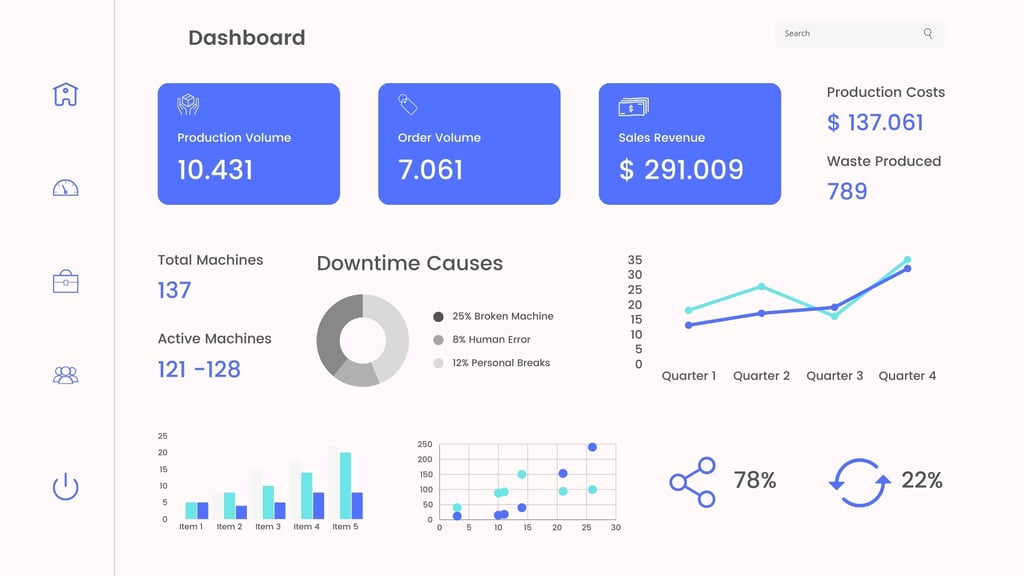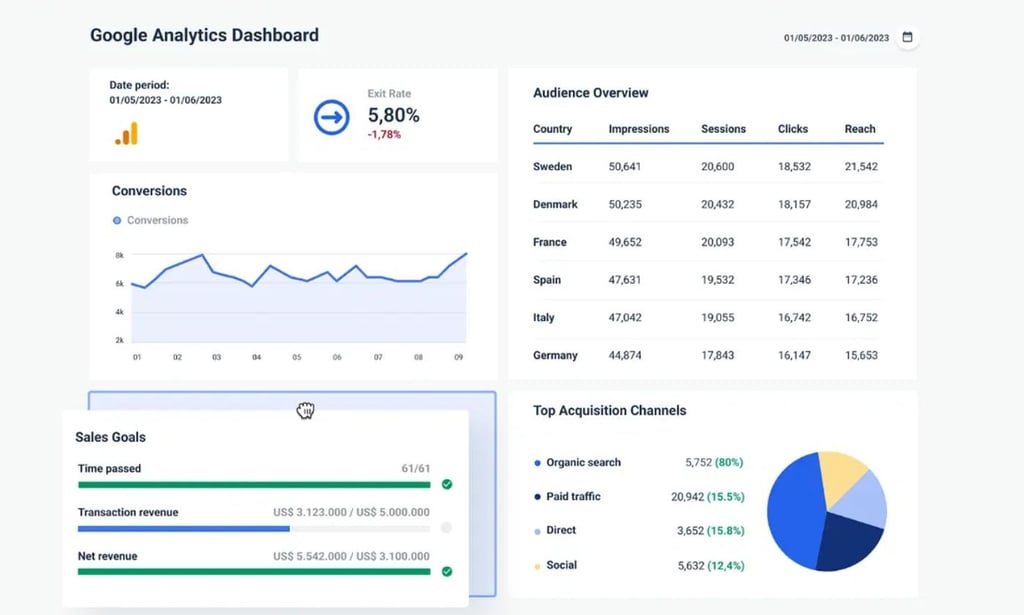Creating Your Website Strategy
WEBSITE
Arshia Shayestehtabar
2/22/20253 min read


A strong website strategy is essential for online success. In this article, I’ll write about choosing the right CMS, leveraging analytics, improving conversion rates, and creating a detailed website blueprint, to build a strategy for your website.
1. Choose the Right CMS
Content Management Systems (CMS) power your website’s backend and simplify content updates.
For Small Businesses: Platforms like Hostinger and Squarespace are ideal.
For Growing Businesses: Consider robust options such as WordPress or Shopify.
Key Points:
• Your CMS supports your site’s content and management.
• Ensure your website’s design (front-end) aligns with your business goals.
• Regularly test your site’s speed with tools like PageSpeed Insights.


2. Leverage Google Analytics
Google Analytics is a free tool that helps you understand your website traffic.
What It Tells You:
Who is Visiting: Details about visitors’ location, devices, and demographics.
How They Arrive: Whether from search engines, social media, or direct visits.
What They Do: Which pages they view, how long they stay, and if they complete desired actions.
Popular Pages: Identify which pages attract the most interest.
Example:
For an online store, you can see which products are popular, which ads drive traffic, and when visitors are most active.
3. Increase Your Conversion Rate
Conversion Rate is the percentage of visitors who take a desired action (like making a purchase or signing up).
Example:
If 100 visitors result in 5 purchases, your conversion rate is 5%.
Why It Matters:
• It shows how effectively your website turns visitors into customers.
• A low conversion rate may signal a need for design or content improvements.
Improvement Tips:
• Enhance User Experience (UX): Simplify navigation and checkout processes.
• Use Clear Content: Write a simple, persuasive copy.
• Optimize CTAs: Design prominent buttons to guide users.
4. Understand User Behavior
Knowing how users interact with your site can refine your strategy.
Tools to Use:
• Screen Recording Tools:
Examples include Hotjar, Fullstory, and Mouseflow to see where users click and navigate.
• User Testing Platforms:
Options like Usertesting, Userbrain, and Uselytics gather direct user feedback.
5. Monitor Social Media and Competitors
Social Media Monitoring:
Use tools such as Mention, Hootsuite, or Sprout Social to track what people say about your brand.
Competitor Research:
• Analyze 5 to 7 key competitors.
• Check their website features, content (blogs, newsletters), and social media engagement.
• Identify strengths and gaps to refine your strategy.
6. Build a Website Blueprint
A Website Blueprint is a strategic roadmap that outlines your website’s structure, features, and design.
Components to Include:
Purpose: Define your website’s goal (e-commerce, education, news, etc.).
Example: An online store needs a shopping cart, a secure payment system, and clear product categories.
User Personas: Understand your target audience.
Sitemap: Map out the structure and navigation.
Wireframes: Sketch basic layouts for each page.
Features: List essential functionalities like registration, contact forms, or payment gateways.
Visual Style: Set guidelines for colors, typography, and overall design.
SEO Strategy: Choose keywords, plan content, and structure your site for search engines.
Benefits:
• Fewer Errors: A clear plan reduces mistakes during development.
• Improved UX: Well-planned layouts lead to a better user experience.
• Streamlined Management: Teams stay aligned with a detailed blueprint.
• Optimized Performance: Resources are used efficiently.
• Enhanced SEO: A strategic blueprint helps your site rank higher in search results.
Conclusion
Creating your website strategy means carefully planning every aspect of your online presence, from selecting the right CMS and analyzing user data with Google Analytics to improving conversion rates and building a detailed website blueprint. By continuously testing and refining your approach, you can create a website that not only meets your business goals but also stands out in search results.


